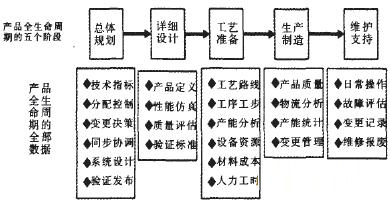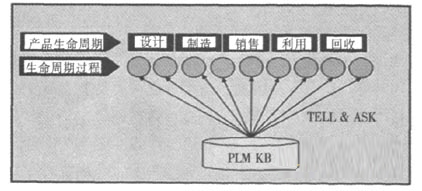introduction
Currently. The complexity and diversity of automotive products is increasing, and individual design teams are no longer able to meet the development of automotive products. In order to avoid lengthy product development cycles, high development costs and quality issues, collaborative and multidisciplinary design teams have become a trend. The car is a knowledge-intensive product. Its development environment requires a computer integration framework, the PLM system. Effectively acquire, process, distribute, retrieve and reuse product knowledge, solve information silos, thereby improving work efficiency, reducing production costs, improving product quality, and ultimately winning the market.
1 PLM and knowledge management
CAX (CAD, CAPP, CAE, CAM and other technologies) has brought new design methods to automotive companies, greatly improving the efficiency of engineering designers in product design, process development, quality simulation, CNC programming and test analysis. And quality. At the same time, a large number of electronic data files have brought unprecedented difficulties to the management of automotive companies. If you print an electronic document as a paper document. Adopt traditional data management mode. Very quickly encountered the inconsistency between electronic documents and paper documents; if you directly use database technology. The first difficulty in managing electronic documents with traditional ideas is that the versions are inconsistent. Therefore, PDM technology came into being. The first is to solve the problem of storage and management of a large number of electronic data. Providing an electronic warehouse enables design engineers to quickly and easily capture valid data from the design process; secondly, second-generation PDM products emerge. Added changes management, document management, workflow management and project management. At the same time, the integration ability and openness of the software have also been greatly improved.
Although PDM technology is very effective in the field of automotive engineering design. However, there is nothing in the non-engineering fields such as sales, marketing, and supply chain management of automobile companies. In particular, at present, automobile manufacturing companies widely use ERP, SCM, CRM and other information technology to simplify processes, improve management systems, and improve production efficiency. ERP, SCM, and CRM technologies all play a role in every specific stage of the automotive product life cycle. For example, ERP is mainly responsible for production, SCM is effective for supply management, and CRM plays an important role in sales and after-sales. Come to each other. However, PDM cannot provide a shared information platform for ERP/SCM/CRM, which brings great difficulties to the production and operation of automobile companies. The concept of PLM is also generated.
Product Lifecycle Management PLM has been in place since the end of the 20th century. It quickly became the focus of automotive companies. PLM combines e-commerce technology and collaborative technology. Integrate the product development process with SCM, CRM, ERP and other systems, transform the island-based process management into integrated integrated management, and realize the comprehensive digitization from concept design, product design, product production, product maintenance to management information. To realize the improvement of enterprise knowledge value and knowledge sharing management, product development and business process optimization, thereby comprehensively improving the production efficiency of enterprises, reducing the cost of product life cycle management, and improving the market competitiveness of enterprises.
PLM is designed to provide a shared platform for the generation, organization and distribution of products and related information. The scope of PLM management goes beyond the engineering field of PDM. It extends to the entire life cycle of marketing, production, sales and after-sales, and will also be linked to the staff at all stages of the product. Its functions include the generation of product information, management control, etc. in the life cycle. This can be seen. PLM is actually a process of knowledge management. The core of PLM is to capture and classify, manage, and reuse all the knowledge generated throughout the product lifecycle.
2 The meaning of PLM's knowledge management model
2.1 PLM knowledge management model
The entire life cycle of an automotive product can be divided into five phases: master planning, detailed design, process preparation, manufacturing, and maintenance support. Each process has its own specific data information, as shown in Figure 1. Knowledge is especially important in today's information age competition. Appropriate trade-offs. Accurate understanding of knowledge is necessary. Data, information and knowledge are three intertwined concepts. Although it is difficult to draw a clear line between the three, they have some subtle differences: data is disordered and unprocessed; information is processed data integration, making decision making easier; knowledge is ordered Information can be used to solve problems, and data and information are easier to store and control than knowledge. Therefore, systematic management of organized knowledge is challenging. Studies have shown that only 4% of organizational knowledge in the enterprise is utilized, and the remaining 96% are in the human brain [1]. The amount of knowledge that is utilized, although small in number, is easy to access and mine, making it easier for leaders to make decisions. Play an important role in the enterprise. The most important role of knowledge management is to mine useful knowledge and externalize it. Used for corporate decision making.

Figure 1 Product life cycle data information
Knowledge management refers to the management of the process of collecting, distributing and utilizing knowledge. Knowledge management of product life cycle refers to the management of knowledge generated at various stages of the product life cycle. The PLM-based knowledge management model is shown in Figure 2. It is a PLM-based knowledge management model: the ASK&TELL model. The various stages of PLM interact with the PLM knowledge base. PLM's knowledge base is more than just a physical central repository. Knowledge of the various stages of PLM can be added to the PLM knowledge base. When a problem is encountered, the staff can retrieve the (ASK) PLM knowledge base and the knowledge base will give the answer (TELL). The knowledge generated by the machine and the experience knowledge used by the employees are stored in the knowledge base and are mined and utilized. Knowledge users use the orderly knowledge in the knowledge base for configuration, change, document management, etc., to support decision-making and guide production.

Figure 2 PLM-based knowledge management model
Aluminum Sliding Windows,Materials For Aluminum Sliding Windows,Aluminium Sliding Windows And Doors,Aluminum Sliding Doors And Windows
Guangdong ODICK Intelligent Home Technology Co., Ltd , https://www.odickgroup.com